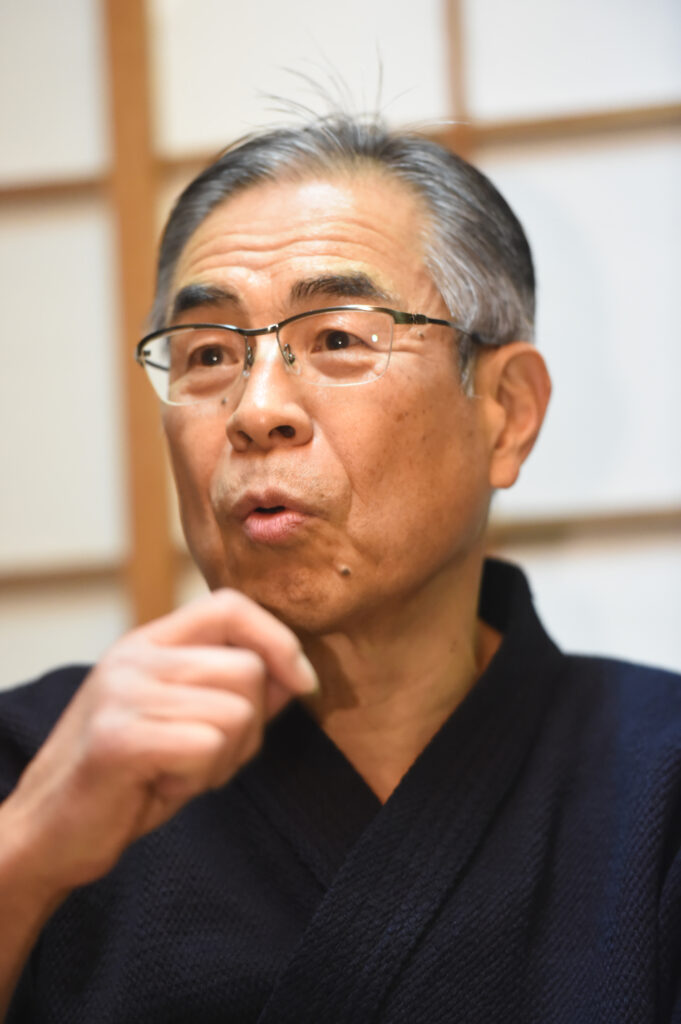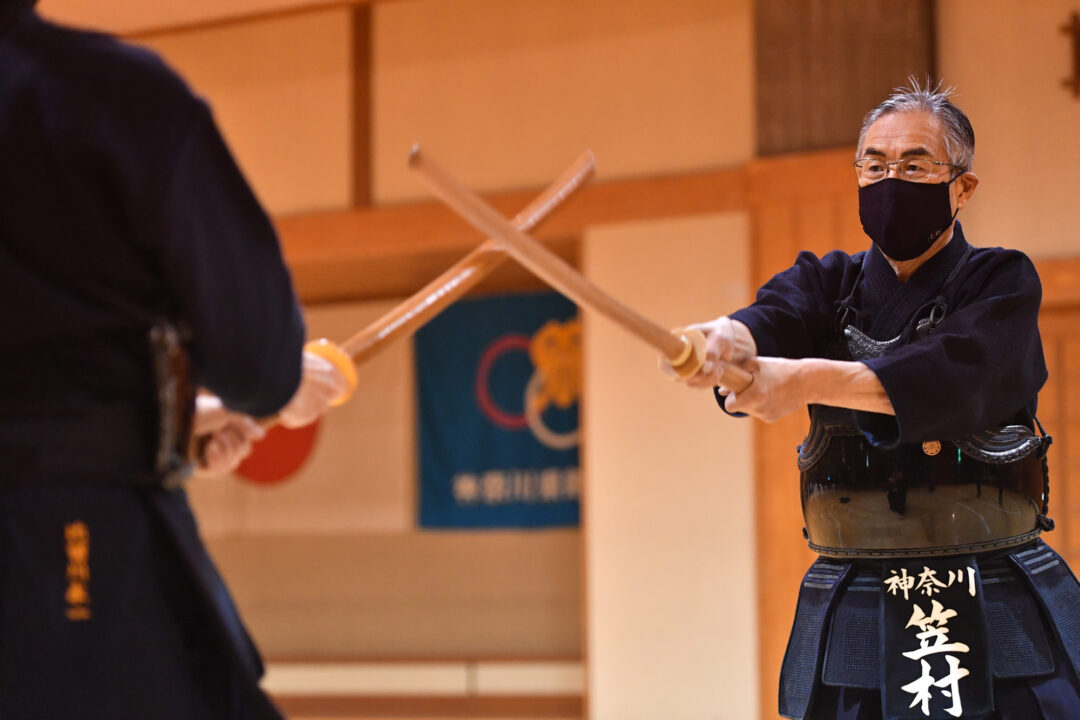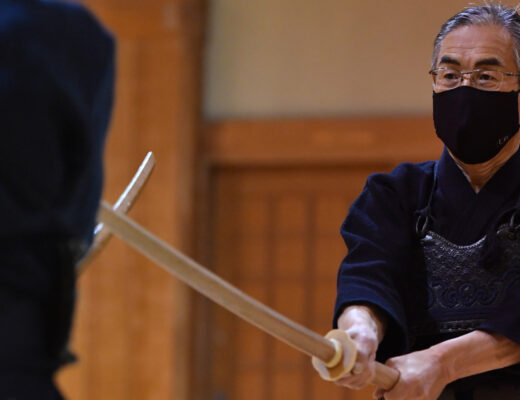KENDOJIDAI 2021.9
Translation: Jouke van der Woude
Battle hardened Hanshi, Kasamura Koji, emphasizes, “It is important to practice with an awareness of the elements of Yuko Datotsu: The use of Tenouchi, and strong and sharp strikes. This is how you should learn to strike with a sharp movement of the Kensaki and the power concentrated in the Shinai’s Mono-uchi.
Kouji Kasamura, Hanshi 8th Dan

Article 12 of The Regulations of Kendo Shiai and Shinpan stipulates that “Yuko-datotsu is defined as an accurate strike or thrust made onto the Datotsu-bui of the opponent’s Kendo-gu with Shinai at its Datotsu-bu and correct Hasuji in high spirits and correct posture, being followed by Zanshin”.
In order to identify a valid strike that satisfies the requirements of posture, high spirits (vocalization), Datotsu-bui, Datotsu-bu of the shinai, and Hasuji, it is necessary to instantly grasp such factors as Maai, opportunity, body movement, Tenouchi, strength, and sharpness.
In regular Keiko, it is especially important to be aware of the action of Tenouchi, strength and Sharpness, so that you can devise, study, and master them. We should be conscious of the action of Tenouchi and strength and sharpness from Kihon Keiko such as Suburi, Kirikaeshi and Uchikomi.
When I perform a technique, I squeeze the little fingers of both hands slightly. I believe that by doing this, the Kensaki will move fast and the Shinai will move strong and sharp, with power in the Datotsu-bu of the Shinai. I believe that you practice Kendo through trial and error in your regular Keiko in terms of how you use your joints and grip the Shinai.
In Kendo, it is difficult to feel that you are making progress. However, if you continue to practice Kendo steadily, like piling up thin sheets of paper, your body will learn to move subconsciously.
In competitive scenarios, it is important to apply Seme to the opponent, but it is rarely possible to feel whether it is effective or not. Even if you think you have applied Seme to your opponent, if it is not transferred to them, they may even counterattack.
I believe that in severe mutual Seme, striking without losing your Kamae or posture and without missing a moment of opportunity will lead to a brilliant and powerful strike.
In Kendo, the best opportunity to strike is to seize the moment just before the explosion. In order to seize such an opportunity, the wrists must be used softly.
To use the wrist softly, first of all, you need to make a Kamae which allows you to do so. If your left hand is not in a good position or if your grip is ineffective, you will not be able to use your wrist softly. In Kamae, it is easy to think you are doing it correctly when in fact you are not. When I was in bad shape or had a series of consecutive Shiai, I also had a distortion of my Kamae. Each time this happens, I try to correct my Kamae by looking in the mirror.
From the next section, I will introduce some specific things I pay attention to regarding the action of Tenouchi and the sharpness of strikes.
The rest of this article is only available for Kendo Jidai International subscribers!



